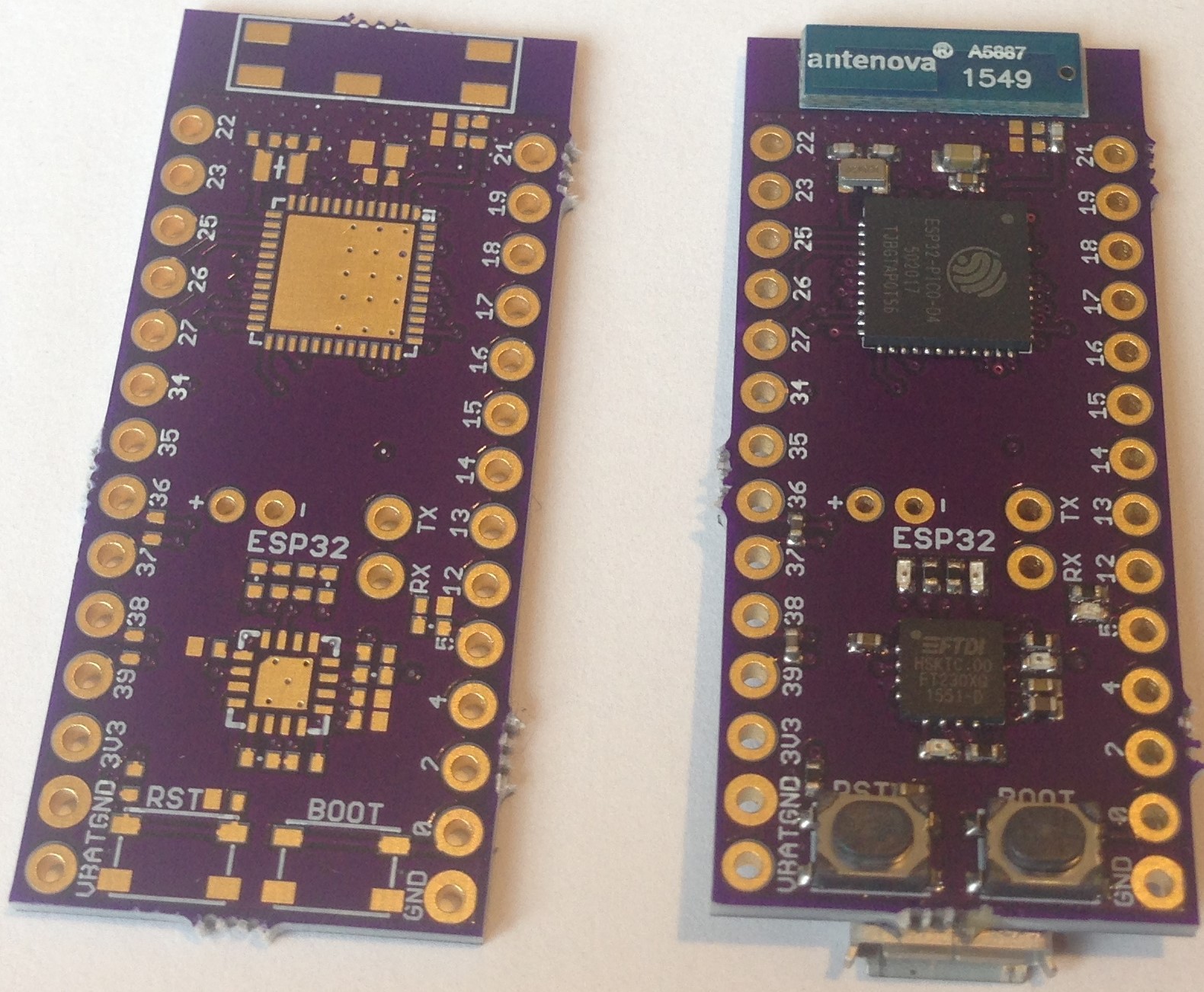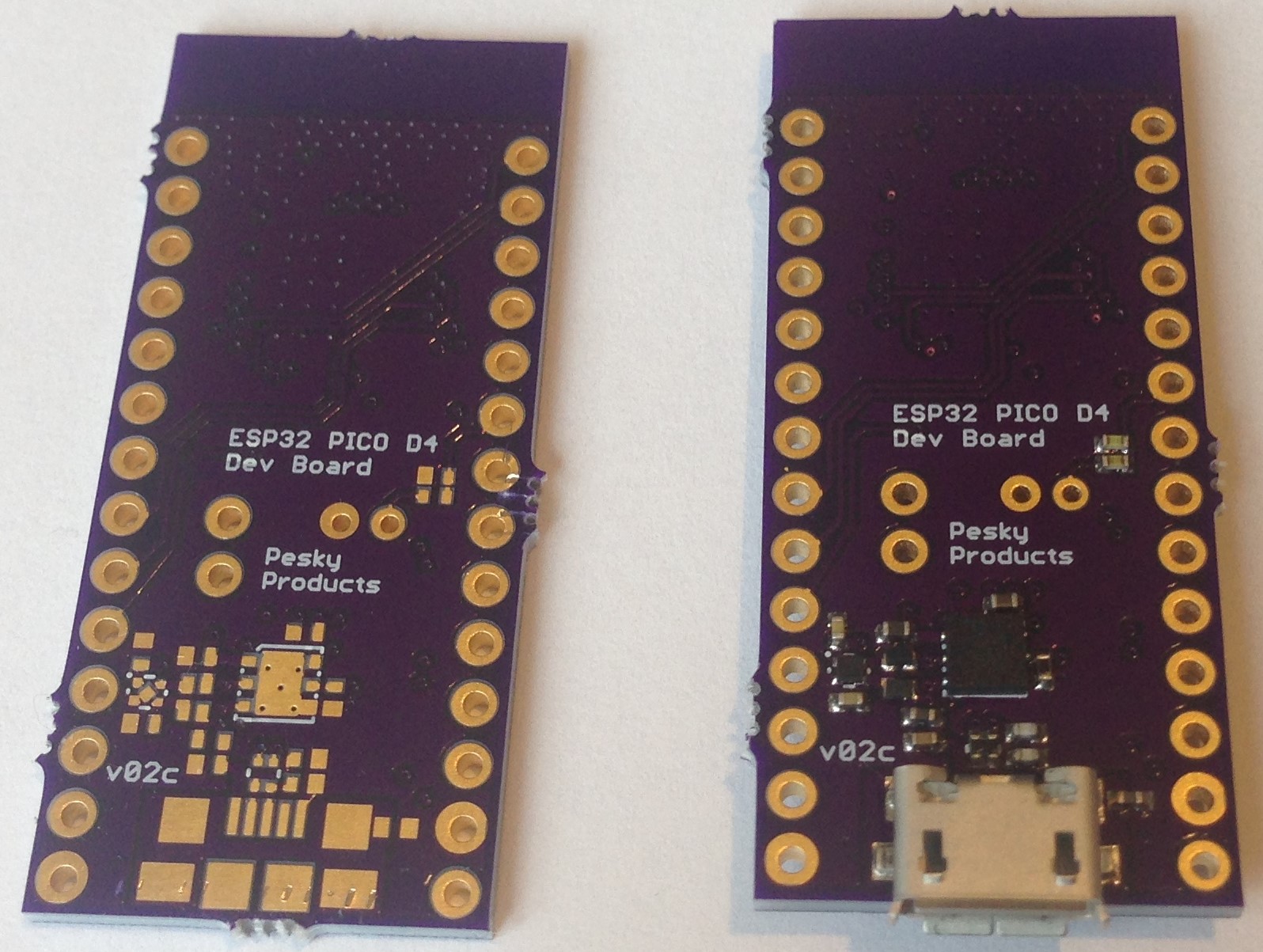03/19/2018
I got both the ten ESP32-PICO-D4 ICs I ordered from Electrodragon and the three pcbs I designed for them from OSH Park today. So I immediately went to work assembling the components to make my first ESP32-PICO-D4 development board.
The assembly of the LDO, battery charger, USB, FTDI chip, etc went as usual as I have done this dozens of times so nothing interesting there. The assembly of the PICO IC was super easy, no terrifying 0.35-inch pitch IC like the ESP32-D2WD. In fact, the PICO is easier to solder well than any of the ESP32 ICs I have tried. More like soldering the ESP8285/66. And with most of the components embedded in the PICO putting the entire board together took less than an hour, where usually just the ESP32 part takes this long.
The board worked first time out. I was able to flash a program using the Arduino IDE using ESP32 dev module, DIO, 80 MHz flash speed, 921600 UART speed, and 2 MByte flash selections (I got the flash size wrong but it didn't seem to matter). I got the led blinking, serial data (battery voltage and chip temperature) streaming to serial. I need to test the pin functionality, etc but so far so good!
I tested the wifi and was seeing up to four networks including my home network, an extender, a laptop and my neighbor's wifi network. The Antenova performance seemed to be about as good as the pcb antenna on the ESP32-WROOM module and slightly poorer than a monopole copper wire but it is hard to tell with RSSI alone and I would like to find some convenient way to test and optimize the antenna performance short of buying a network vector analyzer.
Here is what the board ended up looking like:


Overall I am so pleased with the performance and ease of assembly and low cost of the ESP32-PICO-D4 that I am abandoning any attempt to create a module of my own since Espressif has done such a wonderful job of it. Kudos Espressif!
 Kris Winer
Kris Winer
Discussions
Become a Hackaday.io Member
Create an account to leave a comment. Already have an account? Log In.
I've found the performance with a 1/4-wave wire and the Antenova chip antenna is about the same. One thing I haven't done is optimized the performance using the pi matching circuit. So maybe it is possible to better with one versus the other. The ESP32 is not designed for 50 Ohm impedance and the only way to optimize is to use rather expensive test equipment, which I don't have.
Are you sure? yes | no
Hi Kris. Thanks to share your project and experiences. Please, can you tell if you find a way to improve the reception of the ANTONOVA antenna, since I find it difficult to accept that a piece of wire is better. Thanks in advance.
Are you sure? yes | no